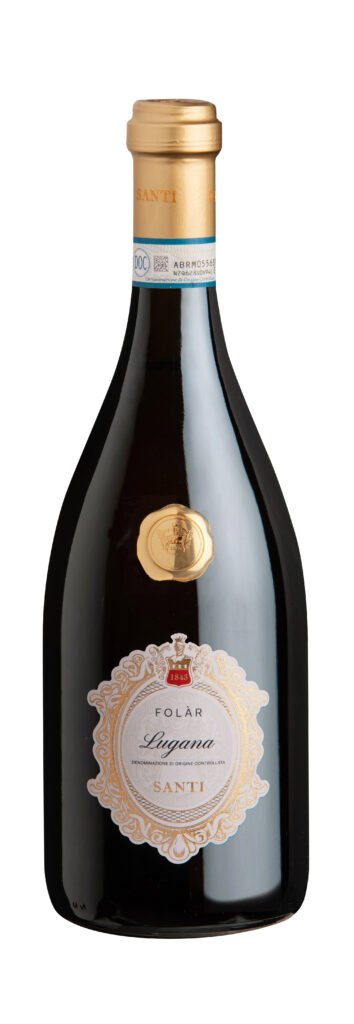The term Folàr in the Verona dialect means “punching down”, a winemaking process generally reserved for red wines and used in the production of this Lugana. It consists of repeatedly breaking the cap of pomace and pushing it under the surface of the must, which is thus enriched by the noble components of the skin during the fermentation, thereby boosting the structure and ageing capacity of the wine.
Varieties:
Turbiana, better known as Trebbiano di Lugana.
Production District:
Municipalities of Sirmione and Pozzolengo. The area is characterized by a morainic amphitheatre, whose undulating surface was formed by the retreat of the ancient glacier that eroded the Alps and created Lake Garda.
Altitude and Aspect:
The vineyards are aligned north-south. The microclimate is always very favourable due to the lake’s mitigating effect on temperature, thus ensuring perfectly ripe and healthy grapes.
Type of Soil:
Very clayey limestone soil with a high mineral content.
Training System:
Mainly double-arched cane with Guyot pruning.
Harvest:
The grapes are handpicked during the first ten days of October.
Winemaking Method:
The entire process is carried out in a reductive environment in order to guard against contact with oxygen. Following soft crushing, the grapes are transferred to the fermentation vessels, where they undergo a pre-fermentation cold maceration until the cap rises (about 48 hours). After racking and soft pressing, the must is cold decanted and then fermented very slowly with selected yeasts.
Ageing:
The wine remains on the lees in steel vats until bottling.

Colour
Vintage
Bottle Size
ABV
Region:
Producer:
Grape Variety:
Case Size
Wine Type
Growing Altitude
Shelf Life
Tasting Notes
Food Pairings

The UK’s leading Italian wine importer
Sign up for our newsletter to enjoy the latest additions to our stock, new producer featurettes and wine lists.